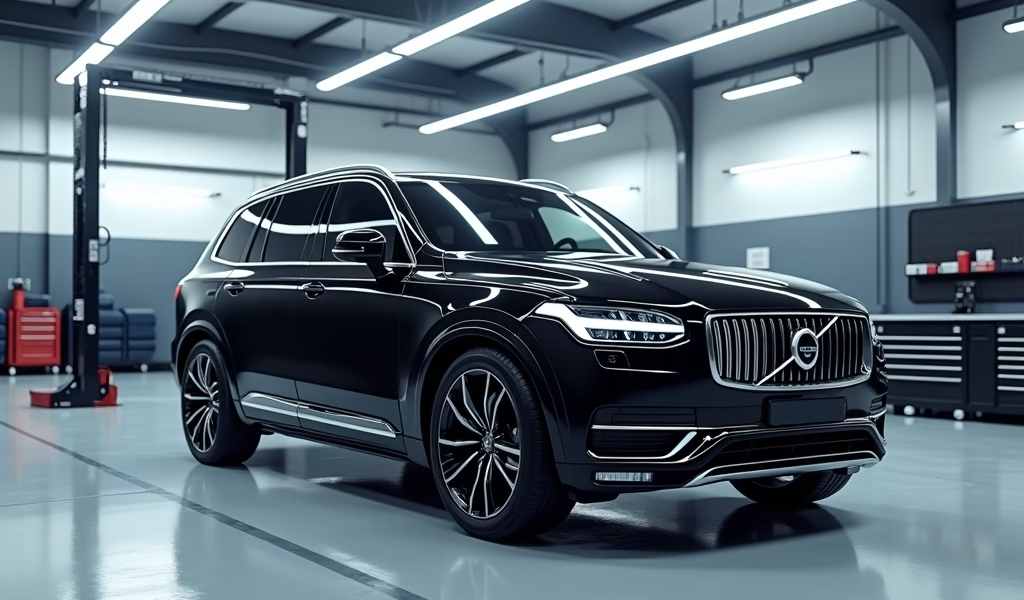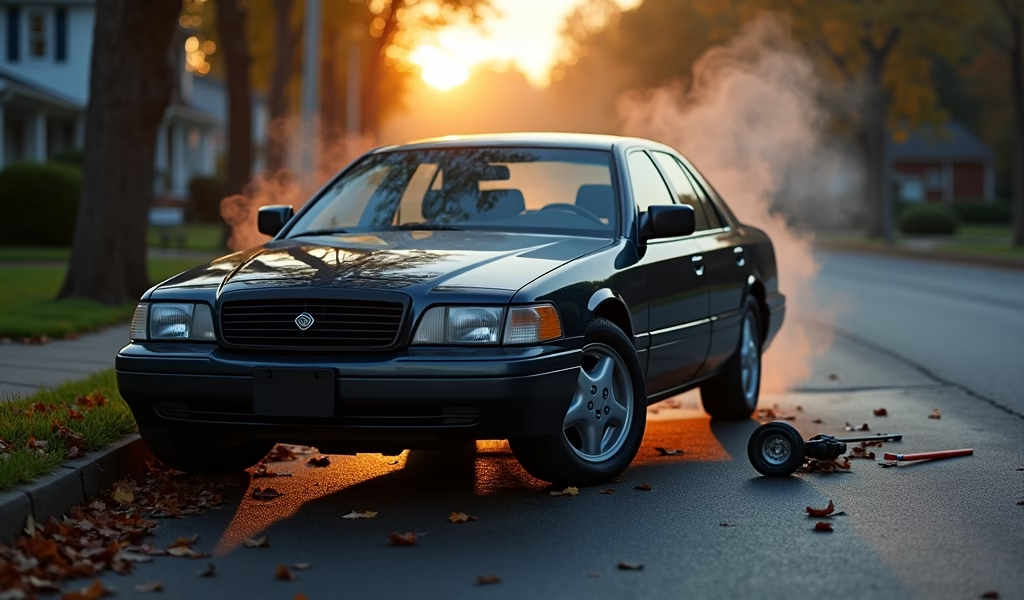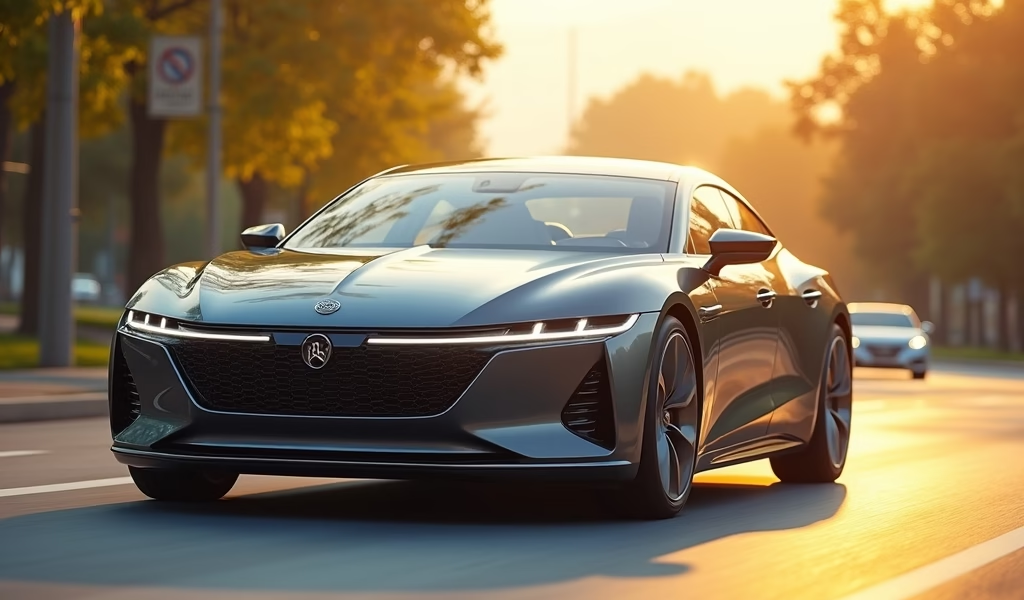Overview
This article presents the best family cars of 2024 while emphasizing that proper maintenance is essential for vehicle longevity, covering everything from seasonal care to DIY tips across various vehicle types. It highlights top models like the Honda Odyssey and Toyota Highlander Hybrid, while providing specific maintenance schedules and explaining how new tech features can simplify vehicle upkeep for busy families.
Table of Contents
- Introduction to the Best Family Cars of 2024
- Choosing the Right Family Car in 2024
- Top Family Car Models for 2024
- Essential Maintenance Tips for Family Cars
- Seasonal Maintenance Considerations
- Preventive Maintenance Schedule
- DIY Maintenance Tips for Family Cars
- Tech Features That Enhance Family Car Maintenance
- Conclusion
- Frequently Asked Questions
Introduction to the Best Family Cars of 2024
Finding the perfect family car in 2024 involves more than just counting cup holders and cargo space. As a mechanic with over 15 years of experience working on family vehicles, I’ve seen firsthand how the right maintenance routine can transform a good family car into a great one. The best family cars of 2024 combine innovative safety features, comfortable interiors, and surprisingly manageable maintenance requirements.
Today’s family vehicles have evolved dramatically from the station wagons and minivans of yesteryear. Modern SUVs, crossovers, and even electric vehicles offer families reliable transportation with tech-forward features that make daily drives and road trips equally enjoyable. But even the most sophisticated best family car models for 2024 require proper care to deliver years of dependable service.
In this comprehensive guide, we’ll explore not just which vehicles deserve your attention this year, but more importantly, how to maintain them properly to protect your investment. After all, a family car is more than transportation—it’s where countless memories will be made over thousands of miles.
Choosing the Right Family Car in 2024
When selecting a family vehicle, consider your unique needs first. A family of four with young children has different requirements than a family with teenagers or multiple pets. Think about your typical passenger count, cargo needs, and driving environments.
Safety should always be your top priority. Fortunately, the Insurance Institute for Highway Safety reports that 2024 models have more standard safety features than ever before. Look for vehicles with advanced driver assistance systems (ADAS), multiple airbags, and high crash-test ratings.
Consider your maintenance comfort level too. Some vehicles require specialized knowledge or tools that might make DIY maintenance challenging. Others are designed with accessibility in mind. If you’re planning to handle routine maintenance yourself, this factor shouldn’t be overlooked.
Fuel economy remains important despite fluctuating gas prices. Many of 2024’s best family cars offer impressive efficiency through hybrid powertrains, aerodynamic designs, and lighter materials. Remember that maintaining proper tire pressure and following maintenance schedules can significantly impact your real-world fuel economy.
Finally, don’t underestimate the value of a comprehensive warranty. Many manufacturers now offer impressive coverage that can save thousands in potential repair costs. Just be aware that warranties typically require you to maintain service records and follow recommended maintenance intervals.

Top Family Car Models for 2024
The family car segment has become increasingly competitive, with several standout models deserving your attention this year. The Honda Odyssey continues its legacy with exceptional reliability and innovative features like CabinWatch and CabinTalk that help parents monitor backseat activities. Its maintenance schedule remains straightforward, with major services at predictable intervals.
For SUV enthusiasts, the redesigned Toyota Highlander Hybrid delivers impressive fuel economy (up to 36 mpg combined) without sacrificing power or cargo space. Toyota’s reputation for longevity is well-deserved, but remember that hybrid systems do require occasional specialized maintenance beyond traditional powertrain care.
The Kia Telluride remains a value leader with its combination of premium features and reasonable starting price. Its maintenance costs trend lower than many competitors, though its sophisticated all-wheel-drive system deserves attention during regular service visits.
For families embracing electrification, the Volkswagen ID.4 offers a practical entry point with over 250 miles of range and surprisingly spacious interior dimensions. While EVs eliminate many traditional maintenance items like oil changes, they introduce new considerations like battery conditioning and software updates.
The Subaru Outback continues to excel for outdoorsy families with standard all-wheel drive and impressive ground clearance. Its boxer engine design requires careful attention during oil changes to ensure proper fill levels, but overall maintenance remains straightforward for most owners.
When considering your new car buying options, remember that even the most reliable vehicles require consistent maintenance. The initial purchase price is just one factor in total ownership costs.
Essential Maintenance Tips for Family Cars
Regardless of which 2024 model you choose, certain maintenance fundamentals apply universally. First and foremost: follow your owner’s manual maintenance schedule religiously. Manufacturers develop these schedules based on extensive testing under various conditions. These aren’t suggestions—they’re requirements for optimal performance and longevity.
Oil changes remain the cornerstone of proper maintenance. Modern engines often use synthetic oils that can last 7,500-10,000 miles between changes, but family cars often face demanding conditions. Short trips, frequent stops, and heavy loads can accelerate oil degradation. When in doubt, check your oil level regularly and watch for darkening color.
Tire maintenance deserves special attention for family vehicles. Proper inflation not only improves safety and fuel economy but extends tire life considerably. Teach yourself to inspect tires visually for irregular wear patterns that might indicate alignment issues. Consider investing in a quality pressure gauge and check monthly.
Brakes are another critical system deserving regular inspection. Family cars often carry precious cargo, making brake performance non-negotiable. Listen for squealing, grinding, or pulsation—all indicators of potential issues. Most brake pads now include wear indicators that emit a high-pitched sound when replacement is needed.
Finally, don’t overlook your battery and electrical system. Modern family cars contain dozens of electronic systems that place increasing demands on your charging system. Have your battery and alternator tested annually, especially before extreme temperature seasons. A preventive battery replacement at the first signs of weakness costs far less than emergency roadside service with impatient children onboard.
Seasonal Maintenance Considerations
Family cars endure diverse conditions throughout the year, making seasonal maintenance adjustments crucial. As winter approaches, ensure your battery is strong (cold weather reduces battery capacity) and consider switching to winter-specific wiper blades. Check your antifreeze concentration using an inexpensive tester—a 50/50 mix provides protection to approximately -34°F while preventing corrosion.
Spring brings its own challenges with pollen and increased rainfall. Replace your cabin air filter to improve interior air quality and thoroughly clean your windshield inside and out to reduce glare. Check for windshield wiper deterioration from winter conditions, and test your air conditioning before temperatures climb.
Summer heat places additional stress on cooling systems and batteries. Inspect all coolant hoses for cracks, softness, or bulging—signs of impending failure. Clean debris from your radiator and AC condenser, and consider a cooling system flush if it’s been more than two years. Remember that extreme heat accelerates battery fluid evaporation, so visual inspection becomes more important.
Fall maintenance should focus on preparing for winter while addressing any issues that developed during summer driving. Check heater operation, inspect tire tread for adequate winter performance, and test all exterior lights as daylight hours decrease. This is also an ideal time to address any persistent issues before winter weather makes repairs more challenging.

Preventive Maintenance Schedule
While your owner’s manual provides specific intervals, here’s a general preventive maintenance timeline that works for most 2024 family vehicles:
- Every month: Check tire pressure, inspect wiper blades, test all lights, and visually inspect fluid levels
- Every 3 months or 3,000 miles: Check oil level, inspect belts and hoses, test battery, clean battery terminals if necessary
- Every 6 months or 6,000 miles: Rotate tires, check brake pad thickness, inspect suspension components, test coolant protection level
- Annually: Replace cabin air filter, flush brake fluid (if needed), inspect exhaust system, check wheel alignment
- Every 2 years: Replace coolant, inspect fuel system, replace spark plugs (if due), flush transmission fluid (if recommended)
For 2024 models with advanced driver assistance systems, consider annual calibration checks, especially if your vehicle has experienced even minor collisions or windshield replacement. These systems rely on precise sensor positioning that can drift over time or after repairs.
Remember that modern transmission fluids often claim to be “lifetime” but this typically means the expected lifetime of the original owner. If you plan to keep your family car beyond 100,000 miles, consider transmission service around 60,000-80,000 miles despite manufacturer claims.
Timing belt replacement remains critical for interference engines (where valves and pistons can collide if the belt breaks). This service typically occurs between 60,000-100,000 miles depending on manufacturer. Neglecting this service can result in catastrophic engine damage costing thousands to repair.
DIY Maintenance Tips for Family Cars
Many maintenance tasks can be handled at home, even for those with limited mechanical experience. Start with simple items like wiper blade replacement, air filter changes, and light bulb replacement. YouTube tutorials specific to your make and model can provide valuable visual guidance for these tasks.
Fluid level checks require minimal tools and provide early warning of potential issues. Learn to check your oil, coolant, brake fluid, power steering fluid, and windshield washer fluid. Always check fluids with the engine cool (except for transmission fluid, which typically requires the engine running).
Tire rotation can extend tire life significantly and can be performed at home with basic tools if you’re comfortable using a jack and jack stands safely. Always consult your manual for proper lifting points and rotation patterns. Some asymmetric or directional tires require specific rotation methods.
Battery maintenance is straightforward but important. Clean terminals with a wire brush and baking soda solution to prevent connection issues. Most auto parts stores will test your battery for free, making diagnosis simple even without special equipment.
Know your limits, however. Modern family cars contain sophisticated electronics and safety systems that can be damaged by improper service. When in doubt, consult a professional technician, especially for brakes, steering, and suspension components that directly impact safety. Many car buying experts recommend building a relationship with a trusted mechanic even before problems arise.
Tech Features That Enhance Family Car Maintenance
The best family cars of 2024 include technology that can actually simplify maintenance. Many models now feature oil-life monitoring systems that analyze driving conditions and oil quality to determine optimal change intervals. These systems are remarkably accurate and can extend oil change intervals safely under favorable conditions.
Tire pressure monitoring systems (TPMS) provide continuous feedback on tire inflation, though they shouldn’t replace manual checks with a quality gauge. Some advanced systems now specify exact pressure readings for each tire rather than simply warning of low pressure.
Connected car apps from manufacturers like Hyundai, Kia, and GM can send maintenance reminders based on actual vehicle data, track service history, and even schedule appointments directly from your smartphone. These features help busy families stay on top of maintenance without additional mental burden.
Onboard diagnostic systems have evolved significantly, with many 2024 models capable of detailed self-diagnosis. Some can even transmit diagnostic information to service centers before your appointment, streamlining the repair process. This connected car technology continues to evolve rapidly.
For electric and plug-in hybrid vehicles, smart charging features can condition the battery automatically, maintaining optimal charge levels to extend battery life. These systems often allow scheduling charging during off-peak utility hours, saving money while preserving battery health.
Conclusion
The best family cars of 2024 offer unprecedented safety, efficiency, and technological convenience. However, even the most advanced vehicles require consistent, thoughtful maintenance to deliver their promised reliability. By following manufacturer recommendations, addressing seasonal maintenance needs, and developing a relationship with qualified service providers, you can ensure your family vehicle remains dependable for years to come.
Remember that maintenance isn’t just about preventing breakdowns—it’s about preserving your vehicle’s performance, efficiency, and ultimately, its value. The small investments of time and money in regular maintenance pay dividends through improved safety, reduced long-term costs, and the peace of mind that comes with a reliable family vehicle.
Whether you’re driving a hybrid SUV, a traditional minivan, or an all-electric crossover, the fundamental principles of vehicle care remain consistent. Pay attention to your vehicle’s needs, address small issues before they become major problems, and enjoy the confidence that comes from knowing your family’s transportation is in excellent condition. After all, the cost of regular maintenance is always less than the cost of neglect.
Frequently Asked Questions
What is the most reliable family car for 2024?
The Toyota Highlander Hybrid and Honda Odyssey consistently rank highest for reliability in the 2024 family car segment. Both vehicles have proven powertrains and straightforward maintenance requirements that contribute to their long-term dependability.
How often should I service my 2024 family car?
Most 2024 models require basic service every 7,500-10,000 miles, with more comprehensive service at 30,000-mile intervals. Always follow your specific vehicle’s maintenance schedule in the owner’s manual for optimal results.
Are electric family cars cheaper to maintain than gas models?
Yes, electric family vehicles typically cost 30-40% less to maintain over their lifetime. They eliminate oil changes, transmission service, and exhaust system repairs while reducing brake wear through regenerative braking.
What’s the most important maintenance item for family cars?
Regular oil changes remain the most critical maintenance item for gasoline-powered family vehicles. Fresh oil provides proper lubrication and cooling that prevents premature engine wear and catastrophic failure.
How can I extend the life of my family car?
Follow the maintenance schedule, address small problems promptly, avoid extreme driving behaviors, and keep the vehicle clean inside and out. Vehicles that receive consistent maintenance routinely exceed 200,000 miles of service.

